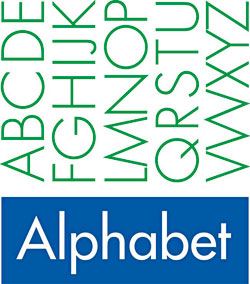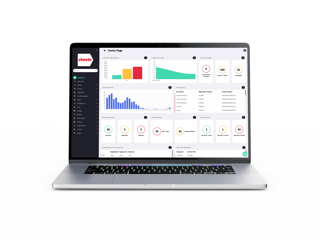Should staff be allowed to make journeys of more than 100 miles in their own vehicles, for instance?
It is usually cheaper to put them in small daily rental car, or give them a pool car for such trips, than to pay them 40p per mile.
When you know who your high-mileage owner-drivers are, you can run a comparison to see what it costs your business to fund them as grey fleet drivers versus what would it cost to put them into a company car (taking into account factors like risk management and the environment as well).
Or it could be a salary sacrifice arrangement that allows them to acquire a car that meets the company standards for business use. The same goes for the ad hoc drivers to whom it might be better to give hire cars or pool cars.
Control measures
What about drivers where there is no financial reason to give them a company vehicle? We’re talking about the person who runs down to the bank three times a week, or someone who needs to work out of two or three different offices during a month.
Some employers have people that they don’t want to put into a rental car – for example, local authorities, who pay drivers a casual car allowance.
This is where measures to control who drives and what they drive come in. The goal here is to ensure that cars are safe to drive and drivers are competent, licensed and insured. You also want to reduce mileage if possible to minimise risks, emissions and costs.
The key aim is make sure that the measures you put in place are cost effective and add value to the business as a whole.
In essence, that means giving drivers clear policy guidelines around their fitness to drive (i.e. licence, insurance, eyesight and medical conditions) and the roadworthiness and fitness for purpose of their vehicle.
The most important thing about a car policy, grey fleet or otherwise, is to make sure that every driver reads it and signs it at least once a year.
In a 2007 survey, Alphabet asked companies whether all their drivers had read and signed their fleet and safety policies. 70% of employers said they had.
But when Alphabet asked drivers whether they had seen and/or signed such a policy, fewer than half of those using their own car on business answered yes.
It is good practice to require staff to complete and sign an annual driver declaration like the example shown opposite.
It shows that the company takes its duty of care responsibility seriously and puts the onus on drivers to declare that they are legally and physically fit to drive.
Some fleets go a step further and only allow employees to drive on business if they hold a driver permit issued by the company.
The permit is a more detailed version of the driver declaration, including notes about the driver’s vehicle, recent vehicle condition checks (tyres, brakes, etc.), insurance details, dates of eyesight and medical examinations, and so on.
Regular drivers may need to renew the permit annually or six-monthly, but staff making infrequent trips might be required to complete a declaration before each journey.
The latter obviously delivers a high degree of compliance and visibility over grey fleet journeys but the business needs to be mindful of whether all the work that it entails is actually adding value.
If the level of grey fleet driving is reasonably low, then it might be perfectly adequate to manage the issue using an Excel spreadsheet to record vehicle and driver details and a system that checks licences, insurances and MOTs.
What are the keys to success in managing a grey fleet?
The first key to success is to take the ‘grey’ out of grey fleet. It’s called grey because it’s a big unknown. It’s obscure and opaque.
Gaining visibility over grey fleet travel in your business is half the battle because when you can see something, you can measure it and when you can measure it, you can manage it.
Mileage audit
One tool that firms are increasingly using to improve visibility is electronic mileage capture. Some firms now pay mileage expenses only through an online mileage system.
Any driver, whether of a company car or a private car, who wants to claim business mileage must record details of every journey on the mileage system, which calculates their payment and sends details to the payroll department.
As well as capturing huge amounts of usable data on mileage, fuel use, emissions and costs, it acts as a strong deterrent to making unnecessary trips or putting in exaggerated claims.
The impact on costs can be dramatic. Customers using Alphabet’s Mileage Audit System experience average reductions of 10-25% in claims for fuel and mileage claims in the first six to 12 months following implementation.
Using the system also helps the business to minimise Class 1A NIC on the mileage element of AMAP and instils confidence that the business is fully compliant when reclaiming VAT.
This strongly implies that some drivers use the opaqueness of grey fleet to cloak excessive driving (and/or claims in excess of miles actually driven), and underlines the value of achieving complete visibility over grey fleet travel.
Appropriate controls
The second key to success is to apply controls that are appropriate, cost effective and which do not simply replace obscurity with excessive complexity.
Aim for the lightest possible touch, but don’t cut corners on critical issues such as licence checking and assessments for drivers who are most at risk by virtue of their driving record or high business mileage.
Communication
Thirdly, communicate. Having by now won the buy-in of senior management and the – initially grudging – acceptance of drivers, you want to keep it.
Report regularly on positive results such as reduced CO2 emissions, fewer incidents and more productive use of cars (if business mileage is falling but the company’s revenue is rising, for instance).
It is very important for managers and drivers to see that new policies and practices are producing results. Some companies email league tables to their drivers, showing which teams and individuals have made the greatest progress – it shows that their efforts are appreciated and appeals to their competitive side.





















Login to comment
Comments
No comments have been made yet.